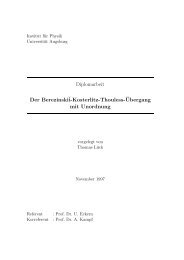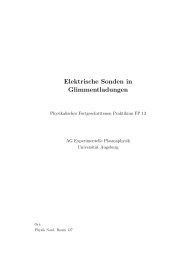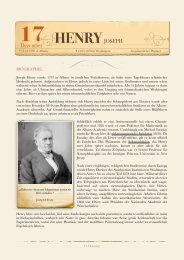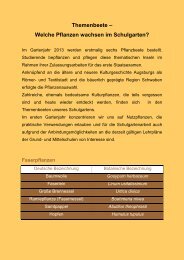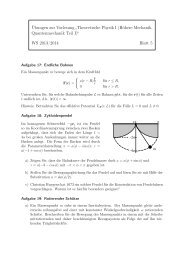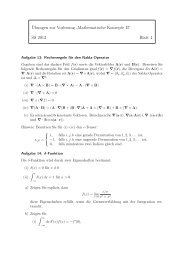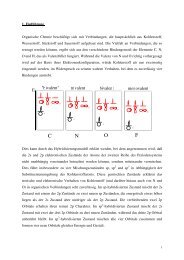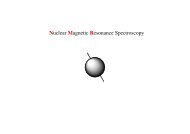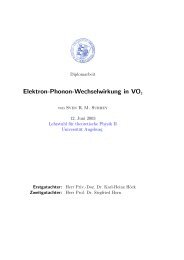Numerical Renormalization Group Calculations for Impurity ...
Numerical Renormalization Group Calculations for Impurity ...
Numerical Renormalization Group Calculations for Impurity ...
Create successful ePaper yourself
Turn your PDF publications into a flip-book with our unique Google optimized e-Paper software.
3<br />
2. INTRODUCTION TO QUANTUM PHASE<br />
TRANSITIONS<br />
This chapter aims to cover the basic ideas of quantum phase transitions that are<br />
frequently used in the main body of the thesis (Chapter 4, 5, and 6).<br />
We start to giving the definitions of the scaling limit and universality from the<br />
viewpoint of classical phase transitions with an example of the one dimensional<br />
Ising model and introduce universal functions that represent the physics in the<br />
vicinity of the critical points as a function of two large (macroscopic) lengths, L τ<br />
(system size) and ξ (correlation length). 1<br />
We bring those concepts defined in the classical cases into quantum systems<br />
to develop a universal critical theory <strong>for</strong> quantum phase transitions. Again the<br />
physical properties near to the critical points are characterized by the universal<br />
scaling function, of which the argument is the dimensionless ratio of two small<br />
energy scales, T (temperature) and ∆ (an energy gap between the ground state<br />
and the first excitation), instead of the classical counterparts L τ and ξ. We take<br />
the two-point correlation,<br />
C(x, t) ≡ 〈ˆσ z (x, t)ˆσ z (0, 0)〉, (2.1)<br />
as an example to discuss the shape of the universal scaling function in the critical<br />
phase (Section 1.2).<br />
Finally, we enter the subject of the thesis, impurity quantum phase transitions,<br />
in Section 1.3, where we mention the specific issues of impurity models, such<br />
as the impurity contribution of the physical observables and the local response<br />
functions at the impurity site. The universal critical theory <strong>for</strong> the impurity<br />
model is distinguished from the one <strong>for</strong> the lattice system in a few respects. For<br />
examples, the feature of spatial correlations, one of the important issues of the<br />
criticality of lattice systems, is absent (or disregarded) in impurity systems and<br />
the quantum critical behavior reveals not in the response to a uni<strong>for</strong>m global field<br />
H but rather in that to a local field h coupled solely to the impurity. All the<br />
arguments concerning the response to the magnetic field are given <strong>for</strong> a situation<br />
where the impurity has a single SU(2) spin Ŝ of size S and the conduction band<br />
is considered as a spinful bath.<br />
1 To be precise, L τ and ξ are not treated independently but <strong>for</strong>m a single argument as the<br />
dimensionless ratio L τ /ξ.



